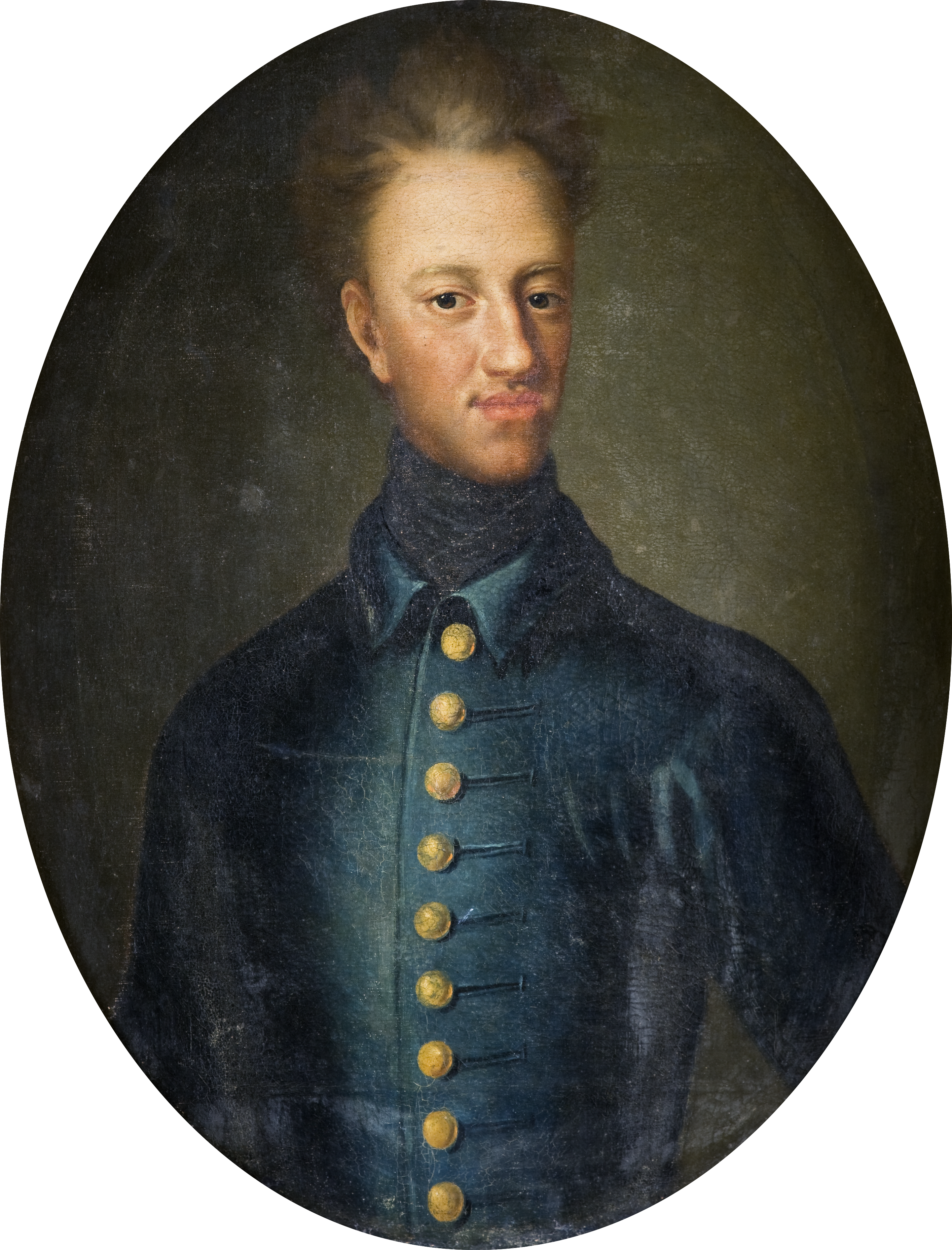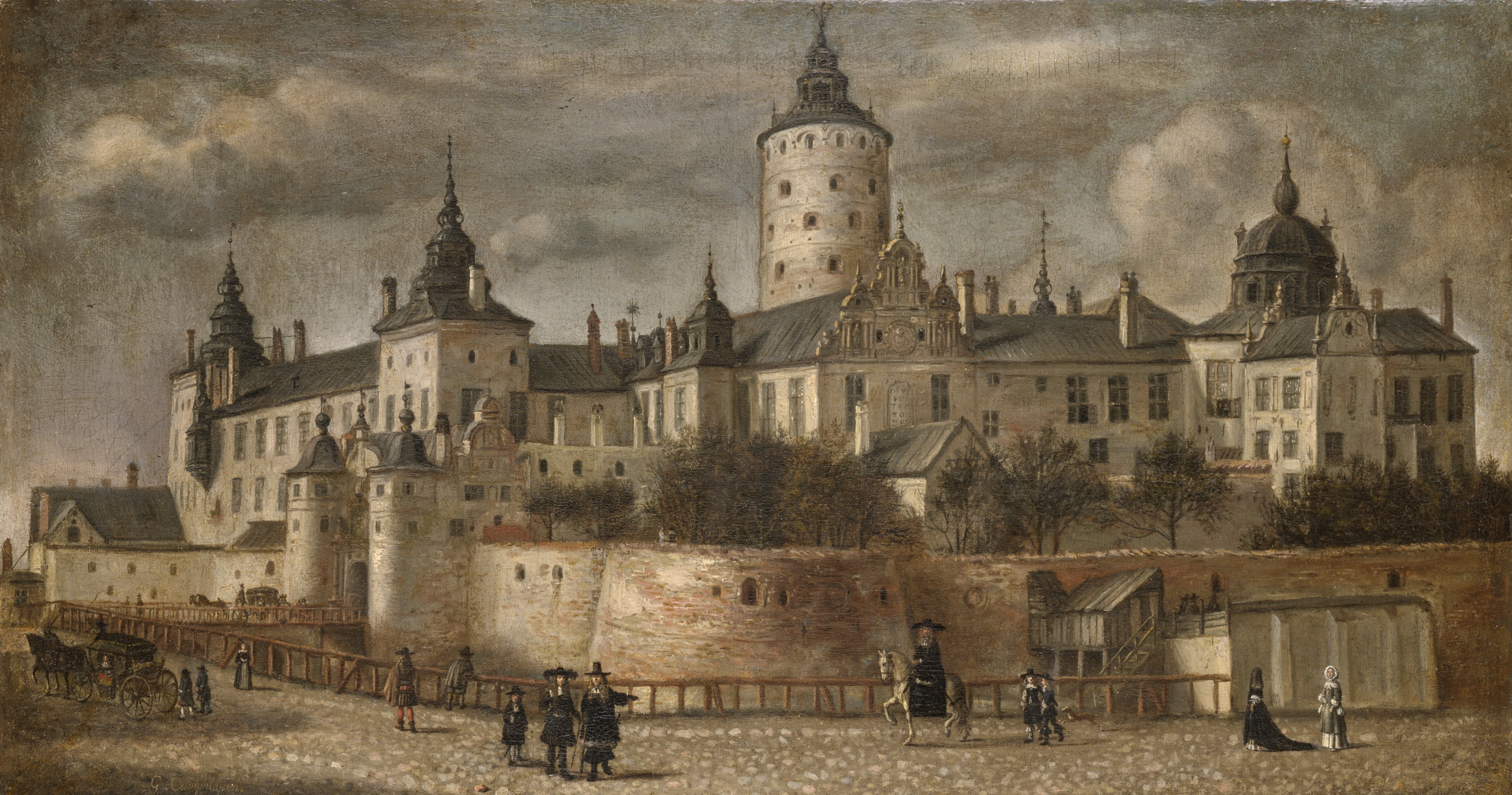ARTICLE SERIES: ROYAL INSPIRATION: MONARCHS WHO SHAPED BIBLICAL HISTORY
Part 2
About King Charles the Twelfth of Sweden
BIBELN.ONLINE
About King Charles the Twelfth

Picture 1: *Karl XII (1707) by David von Krafft - Skokloster Castle.
Introduction
Carl XII, also known as Charles XII and often referred to as the ‘Warrior King’, was born on 17 June 1682 and died on 30 November 1718. He was King of Sweden from 1697 until his death and is one of the most controversial and debated rulers in Swedish history. His time as king was characterised by the Great Northern War (1700-1721), but he also played an important role in religious and cultural developments, notably through the creation of Carl XII's Bible in 1703.
The birthplace of Charles XII

Picture 2: *Tre Kronor från Slottsbacken, oil painting 1661 by Govert Camphuysen.
Charles XII was born at Tre Kronor in Stockholm, the royal palace that was the political and royal centre of Sweden until 1697. The palace was a symbol of the Swedish monarchy and played a central role in the country's history.
Slottet Tre Kronor Castle was originally a defence fortress built on Stadsholmen, one of the islands in what is now central Stockholm. The first building was erected in the 13th century, and over time it developed into a larger complex, becoming the royal palace and the political centre of Sweden. The palace underwent several remodelling and expansions over the years. It was a complex structure with several buildings and towers, surrounded by a moat. Its architecture was a mixture of medieval, Renaissance and Baroque elements. The palace was not only the royal residence but also the seat of parliament and government. It was the centre of political power and ceremony and the repository of important documents and art treasures.
Castle fire: Charles XII's birthplace destroyed in 1697
Tragically, Tre Kronor was destroyed in a massive fire on 7 May 1697. It was one of the most devastating events in Swedish cultural history. The palace, with its rich history and priceless collections of art and literature, went up in smoke. Charles XII had become king that same year, and the fire marked a dramatic start to his reign. The loss of the palace was a national disaster and many valuable archives and cultural treasures were lost.
The Castle Fire led to the construction of what is now Stockholm Castle, but the event had a strong impact on the national psyche. For Charles XII, it was also an important event that many believe shaped his view of the kingdom and its role in society. And this dramatic event in Charles XII's first year as king cast a long shadow over his reign and is an important part of understanding him as a person and as a monarch.
Childhood and early life
Prince Charles XII was born in 1682, the son of King Charles XI and Queen Ulrika Eleonora. He was brought up in a strict Lutheran environment and received a thorough military education. At the age of 15, he became king after his father's death and quickly had to demonstrate his skills as a leader.
‘On the 17th of June, which was on Saturday morning at three quarters to seven, my wife was delivered and gave birth to a son. Thanks be to God, who has helped her, who will soon restore her to her former health!’ - Charles XI.
Queen Ulrika Eleonora played a major role in the upbringing of her children. From his mother, the young prince learnt to say morning and evening prayers and various Biblical stories. The prince was taught Christianity and theology by the Bishop of Strängnäs, Erik Benzelius.
The Great Northern War
Just three years into his reign, the Great Northern War broke out, pitting Sweden against a coalition of Russia, Poland and Denmark. Charles XII showed extraordinary military prowess by quickly defeating the Danish army at the Battle of Narva and turning his attention to the other enemies. He won several victories but also suffered heavy defeats, notably at the Battle of Poltava in 1709, which led him to spend several years in exile in the Ottoman Empire.
Charles XII's Bible
1703

Picture 3: **Charles the Twelfth Bible 1703 Facsimile edition
Between wars and campaigns, Charles XII took time to focus on religious and cultural aspects. The translation was approved by King Carl XII of Sweden. In 1703, Charles XII's Bible was published, a translation of the Lutheran Bible into Swedish and it also built on earlier translations, including Gustav Vasa's Bible (1541) and the so-called ‘Translation after Queen Christina's Bible’ (1693). Charles XII's Bible is a historical and linguistic treasure that represents an important part of Sweden's cultural and religious heritage. It provides an insight into the Swedish language and spelling of the time and shows how the language has developed over the centuries. This Bible became a standard in Sweden and had a huge impact on Swedish culture and language, serving as a symbol of national unity and identity in a time of war and uncertainty. It formed an important part of the life of the Church and society and helped spread Christianity and the Biblical message to the public for over 200 years.
Death and legacy
The fate of Charles XII changed dramatically after the defeat at Poltava. He returned to Sweden in 1715 but could not regain the lost ground. He was killed during the siege of the Norwegian fortress Fredriksten in 1718. His death marked the end of the Swedish Empire, but how he actually died has remained an enigma in the three centuries since Charles XII was shot in the head. There have been various theories about his death. Was it the enemy who fired the fatal shot, or was it Swedes who had grown tired of the king's wartime adventures? Despite three different autopsies of the king's body, in 1746, 1859 and 1917, it has been difficult to determine which bullet took his life. Charles died from a single bullet that passed through his head from left to right. However, there is no undisputed evidence about the actual bullet that killed him.
Now, researchers at the University of Oulu in Finland have produced new information that could be crucial in determining the circumstances of his death. They used ballistic models that mimicked a human skull and fired 19.5 millimetre diameter musket balls through these skull imitations at varying speeds. Their investigations showed that it is most likely that the king was not killed by a lead musket ball during the siege of Fredrikshald in Norway on 30 November 1718. They also shed light on Charles XII's felt hat, which he was wearing when he was shot. The hat still has a clear round hole of about 19.5 millimetres, but the researchers were able to prove that such a hole requires a much larger bullet than one with a diameter of 19.5 millimetres, which a musket cannot fire. This allowed them to dismiss the theory that King Charles XII was murdered with a button from his own uniform, called the ‘bullet button’. The researchers concluded that the most likely scenario is that Charles XII was killed by iron ammunition of the kartesch type with a diameter of well over 20 millimetres. They also estimated that the likely velocity of the bullet would be equivalent to that of a projectile fired from a fortress 200 metres away. In conclusion, the research shows that Charles XII died from an enemy projectile and not from a conspiracy of his own.
Conclusion
Charles XII is a complex and often misunderstood figure in Swedish history. His military successes and defeats have overshadowed other aspects of his reign, including his contribution to Swedish culture through the Charles XII Bible. This Bible had a lasting impact and is an important part of his legacy, alongside the wars and battles that characterised his life and reign.

Some of the most important events in the life of Charles XII
Early Life and Childhood
Born 17 June 1682, son of King Charles XI and Queen Ulrika Eleonora.
Raised in a strict Lutheran and military environment.
Accession to the Throne
Crowned King of Sweden in 1697 after his father's death.
The Great Northern War
War breaks out in 1700, Sweden against a coalition of Denmark-Norway, Poland-Saxony and Russia.
The Battle of Narva in 1700, an unexpected victory for the Swedish army.
March into Poland and Saxony, 1701-1706, including the Battle of Kliszów in 1702.
The Battle of Poltava in 1709, a catastrophic loss that changed the course of the war.
Exile in the Ottoman Empire, Bender 1709-1714.
Charles XII's Bible
Publication of Charles XII's Bible in 1703, an important translation of the Lutheran Bible into Swedish.
Return and Later Years
Returns to Sweden in 1715 and tries to resume the war.
The siege of Stralsund, 1715, ends in defeat and Swedish retreat.
Attempt to invade Norway in 1718 to force a peaceful solution.
Died at the siege of Fredriksten in Norway, 30 November 1718.
Legacy
His death marks the end of the era of Swedish great power.
Continued debate and research on his life, military campaigns and impact on Swedish culture and history.
The castle Tre Kronor
(Picture 4 **** Computer generated model of the Swedish castle Tre Kronor)

NOTE!
Picture 1: *Tre Kronor från Slottsbacken, (Three Crowns from the Castle Hill), oil painting 1661 by Govert Camphuysen. Public domain: : This file has been identified as being free of known restrictions under copyright law, including all related and neighboring rights.
Picture 2: **Tre Kronor från Slottsbacken, (Three Crowns from the Castle Hill), oil painting 1661 by Govert Camphuysen. Public domain: This file has been identified as being free of known restrictions under copyright law, including all related and neighboring rights.
Picture 3: ***Charles the Twelfth Bible 1703 Facsimile edition. Photographer. Torbjörn Holmberg.
Picture 4: ****Computer generated model of the Swedish castle Tre Kronor ("Three Crowns") in Stockholm. This file is licensed under the Creative CommonsAttribution-Share Alike 3.0 Unported license. MLindner6, CC BY-SA 3.0 <https://creativecommons.org/licenses/by-sa/3.0>, via Wikimedia Commons. https://commons.wikimedia.org/wiki/File:Section,_through_castle.jpg